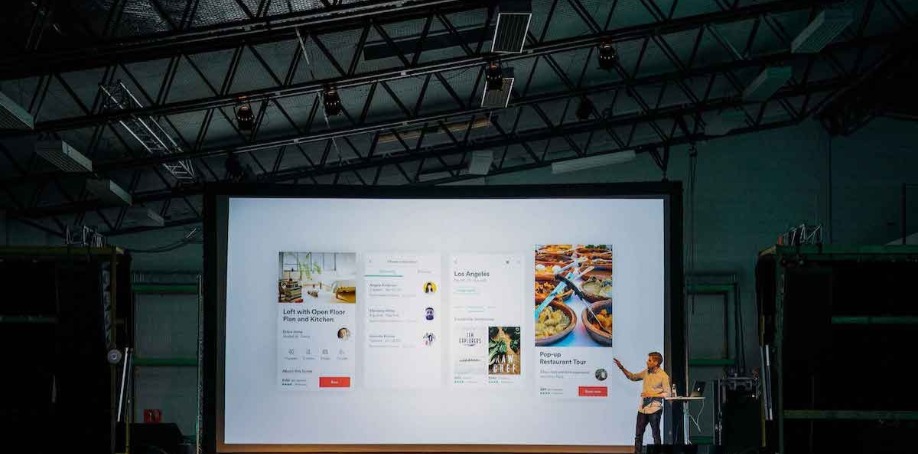
AV over IP has gotten a lot of attention in recent years. Its biggest contribution to the advance of 21st century technology is that it sends audio and visual content over computer networks, treating both forms of content as data. The benefits of this technology are immediately apparent in conference rooms and classrooms. But AVoIP can revolutionize the quality of your customer service as well. Here's how.
How AV Over IP Beats Existing Traditional Setups
Traditional AV installations require connections between each piece of input equipment and each piece of output equipment. Typically, these connections are made with specific cables, with data sent through a central matrix switch with a fixed number of input and output options.
AV over IP handles information differently. While input and output devices are still connected to a switch, the data passed between them is encoded and decoded so that it can all travel on the same computer network. The result? Fewer cables and greatly increased flexibility in setup and design. If a device can connect to the building's LAN or the internet, it can send and receive information on the AV network.
In a world where streaming audio and video are increasingly commonplace, AVoIP is easier for both employees and customers to use. It's intuitive, adaptable and scalable — reducing frustration and improving the customer experience in a wide range of applications.

Customer Information and Digital Signage
In a highly-connected digital world, customers expect information to be instantly available when they need it. An AV over IP setup helps companies provide that information.
Video displays connected to an AVoIP system can provide sales information, recommendations and similar options on demand for customers, according to Thomas Stern at Marketing Land. Displays can be made interactive, allowing customers to view store maps, browse inventory, and compare prices. Displays can also talk to a customer's smartphone or other device through the use of tools like QR codes.
Worried about customers interacting with your computer system at will? Don't be. An AV over IP customer information system can be controlled from a single administrator point, which can control whether each customer-facing display is interactive and what controls the customer can access at interactive displays.
And staff don't have to wander the space updating displays, either. Regardless of how many output screens, signs or kiosks are connected to the network, any or all can be controlled from that single administrator point. This is even true of modern video walls, which can incorporate up to 100 screens whether used separately or coordinated with one another to form one or several larger images, Userful founder Tim Griffin writes in an article at Digital Signage Today.
“A recurring audiovisual presentation can be easily integrated into newly added displays,” the Sensory Technologiesteam adds in a recent blog post. “If the content is originating from a central player, it can be routed through existing AV transmitters to the matrix switcher which is connected to numerous receiving devices or displays. This configuration allows teams to distribute the AV content with real-time updates and refreshes.”
Non-interactive AV over IP displays offer the same ease with regard to updating content, allowing organizations to educate, direct and inform. For instance, AV equipment provider Atlona notes that hospitals increasingly rely on AVoIP to distribute content to waiting rooms and lobbies. Here, a rotating collection of slides, short videos and other content allows patients to see schedules, find staff, and learn more about protecting their health.
IP-based solutions provider ZeeVee describes how campuses use AV over IP digital signage to direct students, provide information and updates and to distribute emergency messages quickly. These applications can easily transfer to a retail or service space in order to help customers stay informed.
Digital display software company Enplug suggests additional ways that businesses can keep their customers informed via digital signage:
- Answer customers' most frequently-asked questions.
- Provide side-by-side product comparisons or point customers toward your best-sellers.
- Highlight promotions and sales.
- Show how your product can be used.
- Offer coupon codes, feedback options, and other incentives to return or to interact.
Denmark's Jyske Bank provides an outstanding case study of how AV over IP can enhance the customer experience. In an effort to improve its customer service, all 125 bank branches underwent a makeover in the mid-2000s, according to AV system products developer and manufacturer, Extron Electronics.
“At Jyske Bank information is vital to success,” Extron explained. “With this in mind, multiple, large displays deliver videos and interactive presentations to customers as well as employees, improving information flow and enhancing the atmosphere in each branch.” The finished project incorporated 1,000 digital signage displays and 500 interactive displays, all of which are aimed at improving the customer experience.

Sound, VoIP and Teleconferencing
Video isn't the only information delivery system that can be greatly enhanced by an AVoIP installation. Audio can set the mood for customers, deliver information and provide a means for customers to communicate with a business even when the're not in the building.
At Jyske Bank, the AV system includes several sound amplifiers, which are primarily used “for mood-setting sound” in meeting rooms, restrooms and common areas. Since they're connected to the network, the type, volume, and balance of sound can be easily controlled from a single location. Changing the sounds in any area is as simple as queuing up a new sound or music file — no more juggling outdated media like cassettes or CDs.
Voice over IP (VoIP), a means to have phone calls via the Internet, has existed for several years, but its early unreliability caused some companies to shy away, sticking instead to traditional landlines. However, as Public Telephone Company CEO Darrell Lopez notes at Telecom Reseller, VoIP as part of an AV over IP installation can have a profoundly positive impact on customer service.
For instance, a VoIP's computer connection allows customers to skip annoying phone trees, reaching a helpful person more quickly, and can translate voice to text and back again. Virtual receptionists on VoIP systems can assist customers while simultaneously increasing brand awareness.
Improved Training and Data Analysis
Outstanding customer service doesn't happen in a vacuum. It requires careful attention to building a culture and brand, training staff to communicate that cultural commitment to customer service, and analysis of customer data in order to address weaknesses.
AV over IP systems can make every step easier. Because AVoIP systems share a computer network, they can also be used to gather data for analysis. How many customers interact with kiosks? When does staff experience the largest call volume? Where do customers notice digital signage, and what makes them pay attention to it?
According to a 2014 study by Alcatel-Lucent, big data has the power to revolutionize customer service — but only if the data is collected and analyzed with customer service improvement in mind. An AV system with isolated output points doesn't offer opportunities to collect data, and data that isn't collected cannot be analyzed. AV over IP expands the opportunities to collect data and thus to understand what, when, where and how customers need support.
Proactively monitoring network status can also help companies maximize the benefits of an AVoIP installation for customer service, Tom Collins, director of enterprise sales and marketing at Atlantech writes. When the entire AV system is on the network, monitoring is simpler and can be done from a single administrative point.
Finally, a thoughtfully-designed AV over IP system can easily be repurposed to help train employees — not only with respect to customer service, but also regarding safety, company culture or the technical aspects of the job. AVoIP's increasing use in schools, universities and meeting rooms demonstrates its adaptability as a learning and teaching tool. In a retail or office space, the AV system can be used to transmit educational materials to staff during training sessions, then easily repurposed to inform and educate customers during the hours the space is open to the public.
Where should your business start? Talk to your AV integrator. As Sensory Technologies CTO Blaine Brown said at the 2018 Rochester Tech EXPO: “The sooner conversations occur with your AV partner, the better; they will be able to design a solution that can measurably meet specific business initiatives.”
Images by: Helena Lopes, Tim Gouw, Teemu Paananen


